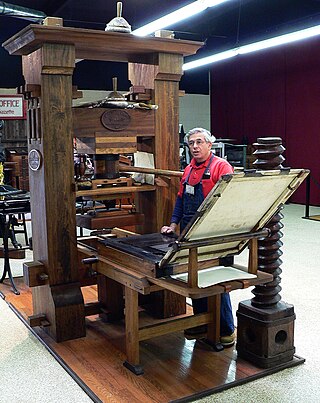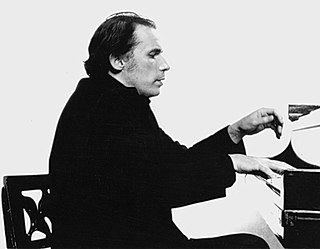A copyright is a type of intellectual property that gives its owner the exclusive right to copy, distribute, adapt, display, and perform a creative work, usually for a limited time. The creative work may be in a literary, artistic, educational, or musical form. Copyright is intended to protect the original expression of an idea in the form of a creative work, but not the idea itself. A copyright is subject to limitations based on public interest considerations, such as the fair use doctrine in the United States.

Intellectual property (IP) is a category of property that includes intangible creations of the human intellect. There are many types of intellectual property, and some countries recognize more than others. The best-known types are patents, copyrights, trademarks, and trade secrets. The modern concept of intellectual property developed in England in the 17th and 18th centuries. The term "intellectual property" began to be used in the 19th century, though it was not until the late 20th century that intellectual property became commonplace in most of the world's legal systems.

Property is a system of rights that gives people legal control of valuable things, and also refers to the valuable things themselves. Depending on the nature of the property, an owner of property may have the right to consume, alter, share, redefine, rent, mortgage, pawn, sell, exchange, transfer, give away, or destroy it, or to exclude others from doing these things, as well as to perhaps abandon it; whereas regardless of the nature of the property, the owner thereof has the right to properly use it under the granted property rights.
Property law is the area of law that governs the various forms of ownership in real property (land) and personal property. Property refers to legally protected claims to resources, such as land and personal property, including intellectual property. Property can be exchanged through contract law, and if property is violated, one could sue under tort law to protect it.
Personal property is property that is movable. In common law systems, personal property may also be called chattels or personalty. In civil law systems, personal property is often called movable property or movables—any property that can be moved from one location to another.
Intellectual capital is the result of mental processes that form a set of intangible objects that can be used in economic activity and bring income to its owner (organization), covering the competencies of its people, the value relating to its relationships, and everything that is left when the employees go home, of which intellectual property (IP) is but one component. It is the sum of everything everybody in a company knows that gives it a competitive edge. The term is used in academia in an attempt to account for the value of intangible assets not listed explicitly on a company's balance sheets. On a national level, intellectual capital refers to national intangible capital (NIC).
Ownership is the state or fact of legal possession and control over property, which may be any asset, tangible or intangible. Ownership can involve multiple rights, collectively referred to as title, which may be separated and held by different parties.

To publish is to make content available to the general public. While specific use of the term may vary among countries, it is usually applied to text, images, or other audio-visual content, including paper. Publication means the act of publishing, and also any copies issued for public distribution.
An intangible asset is an asset that lacks physical substance. Examples are patents, copyright, franchises, goodwill, trademarks, and trade names, as well as any form of digital asset such as software or cryptocurrency, including stablecoins in duress. This is in contrast to physical assets and financial assets. Intangible assets are usually very difficult to value. They suffer from typical market failures of non-rivalry and non-excludability. Today, a large part of the corporate economy consists of intangible assets.
A copyright is the legal protection extended to the owner of the rights in an original work. Original work refers to every production in the literary, scientific, and artistic domains. The Intellectual Property Office (IPOPHL) is the leading agency responsible for handling the registration and conflict resolution of intellectual property rights and to enforce the copyright laws. IPOPHL was created by virtue of Republic Act No. 8293 or the Intellectual Property Code of the Philippines which took effect on January 1, 1998, under the presidency of Fidel V. Ramos.

Gould Estate v Stoddart Publishing Co Ltd (1998), 39 OR 555, is a Canadian case on appropriation of personality, the ownership of copyright, and requirements of fixation.
An intangible cultural heritage (ICH) is a practice, representation, expression, knowledge, or skill considered by UNESCO to be part of a place's cultural heritage. Buildings, historic places, monuments, and artifacts are cultural property. Intangible heritage consists of nonphysical intellectual wealth, such as folklore, customs, beliefs, traditions, knowledge, and language. Intangible cultural heritage is considered by member states of UNESCO in relation to the tangible World Heritage focusing on intangible aspects of culture. In 2001, UNESCO made a survey among States and NGOs to try to agree on a definition, and the Convention for the Safeguarding of the Intangible Cultural Heritage was drafted in 2003 for its protection and promotion.
Intellectual property assets such as patents are the core of many organizations and transactions related to technology. Licenses and assignments of intellectual property rights are common operations in the technology markets, as well as the use of these types of assets as loan security. These uses give rise to the growing importance of financial valuation of intellectual property, since knowing the economic value of patents is a critical factor in order to define their trading conditions.
In law, tangible property is literally anything that can be touched, and includes both real property and personal property, and stands in distinction to intangible property.
Intellectual property valuation is a process to determine the monetary value of intellectual property assets. IP valuation is required to be able to sell, license, or enter into commercial arrangements based on IP. It is also beneficial in the enforcement of IP rights, for internal management of IP assets, and for various financial processes.

In financial accounting, an asset is any resource owned or controlled by a business or an economic entity. It is anything that can be used to produce positive economic value. Assets represent value of ownership that can be converted into cash . The balance sheet of a firm records the monetary value of the assets owned by that firm. It covers money and other valuables belonging to an individual or to a business.
Japanese copyright laws consist of two parts: "Author's Rights" and "Neighbouring Rights". As such, "copyright" is a convenient collective term rather than a single concept in Japan. Japan was a party to the original Berne convention in 1899, so its copyright law is in sync with most international regulations. The 1899 law protected copyrighted works for 30 years after the author's death. Law changes promulgated in 1970 extended the duration to 50 years. However, in 2004 Japan further extended the copyright term to 70 years for cinematographic works. At the end of 2018, as a result of the Trans-Pacific Partnership negotiations and a requirement stemming from the EU–Japan Economic Partnership Agreement., the 70 year term was applied to all works. This new term was not applied retroactively; works that had entered the public domain between 1999 and 29 December 2018 (inclusive) due to expiration remained in the public domain.
The philosophy of copyright considers philosophical issues linked to copyright policy, and other jurisprudential problems that arise in legal systems' interpretation and application of copyright law.
Fixation in Canadian copyright law is a threshold consideration that must be used in copyright infringement cases by courts to determine if copyright actually exists.
Software copyright in China in Chinese Law means that a creator or other Obligee enjoys exclusive rights of the software under related copyright law.




